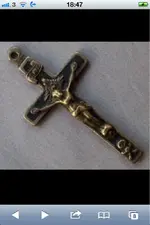Re: Crucifix 1700's?
Nice. It's European. There was an almost identical one on ebay, (sold for $51), and here is the description:
This most rare and unusual inlaid Crucifix is plated with chrome, probably over brass. It is inlaid with mahogany or ebony to which the Body of Christ and the other elements are nailed. On the back is the Sacred Heart of Jesus encircled with the Crown of Thorns, also in chrome. It is large, 5 1/4 inches tall, and 2 3/8 inches wide. It is European, and most likely was brought to this country by a nun, priest or religious brother. These Crucifixes were traditionally hung in the cell of a nun or monk, to remind them of the Passion of Christ, and to mediate upon the Four Last Things - Death and Judgement, Heaven and Hell. The Catholic Faithful occasionally treasured these Crucifixes as well, as an enhancement to their spiritual lives. At the top of the cross is a metal piece with the letters “INRI” in a scroll. These are the initials for the Latin phrase, “Jesus of Nazareth, King of the Jews.” This is what Pilate ordered to be placed on the cross while Christ was being crucified. Above Christ’s head is an elaborate halo. At His feet is the Skull and Crossbones that makes this an especially rare piece. Most inlaid crucifixes were made without the Skull and Crossbones. Quite often when they had them, people pried them off because they felt uncomfortable with them. The age and high quality of this Crucifix is indicated that the Body of Christ is solid and three-dimensional, not hollow in the back as most are. The skull and bones have many symbolic meanings. All Catholics are encouraged to meditate on the “Four Last Things - Death and Judgment, Heaven and Hell”, so that they will live in a state of grace and prepare themselves for Heaven. The skull is a great reminder of human mortality. Jesus Christ was crucified on Golgotha - “the place of the skull”. There is a legend that Christ, the New Adam, who conquered sin and death, was crucified on the gravesite of the first man, Adam, who brought sin and death into the world through his disobedience to God. The skull is a symbol of Adam’s grave - antique prints of the Crucifixion often show a skull at the foot of the Cross. Most important of all, the skull and bones are placed beneath Jesus’ feet, to show that He triumphed over death and sin on our behalf. The Crucifix is in excellent condition, with occasional and very slight wear to the chrome finish. There are some slight defects that appear to be artifacts of the manufacturing process, rather than later damage. This piece has been very well-kept, probably treasured dearly. It is of European origin, and dates back to the 1920's or earlier. It was probably made in what is now Germany. This is a very rare item in great condition - it is an inspiration as well!



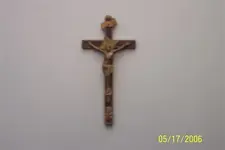
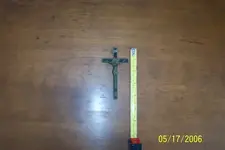

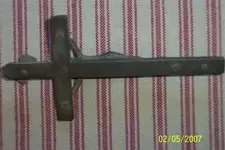
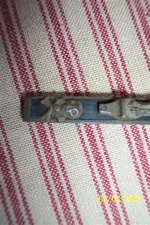
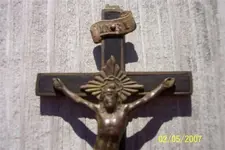

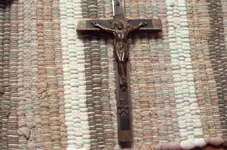

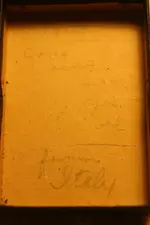
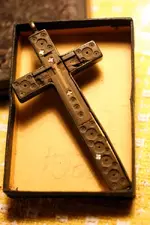
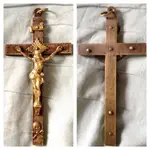

 These species are typically found in South America or the African continent.
These species are typically found in South America or the African continent. 